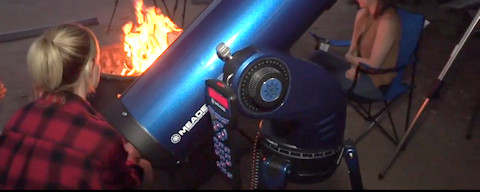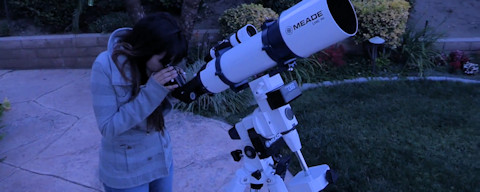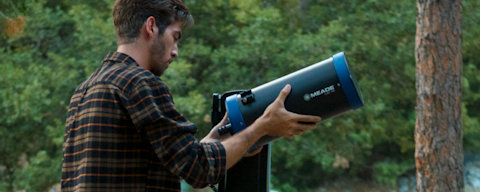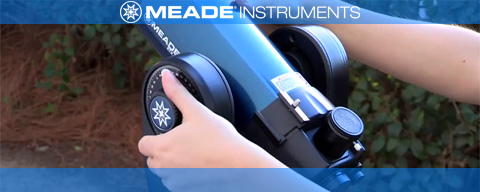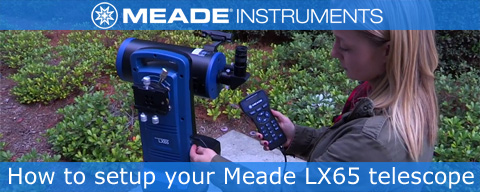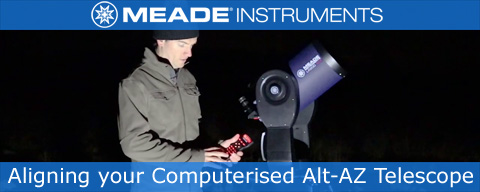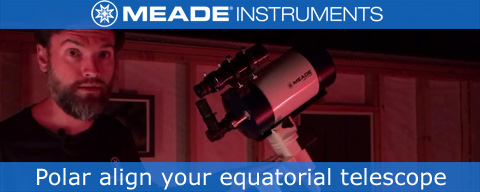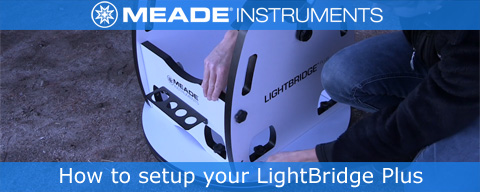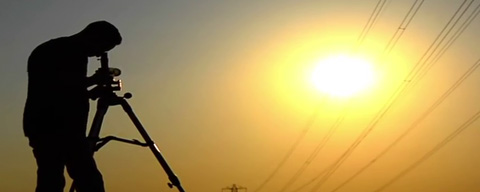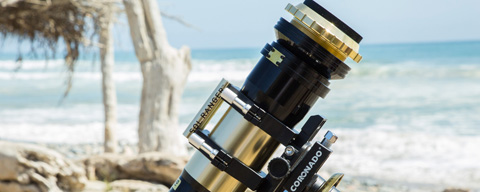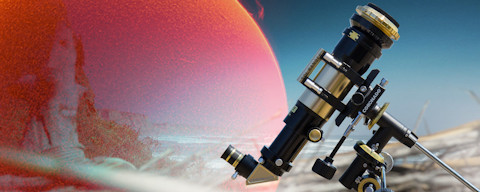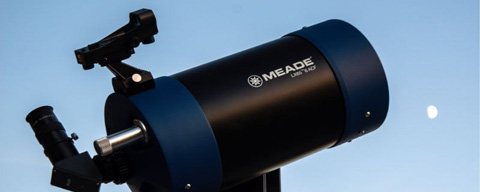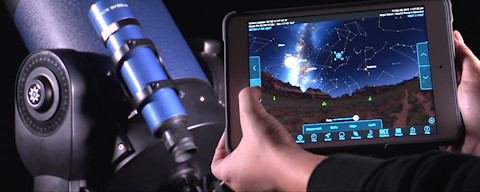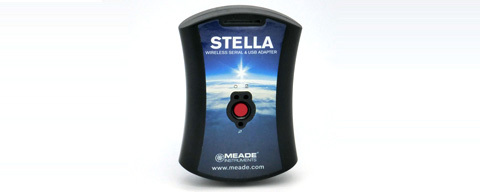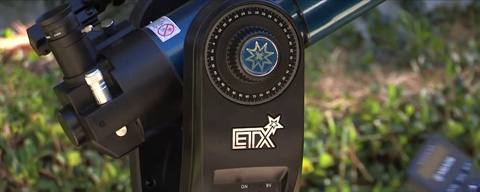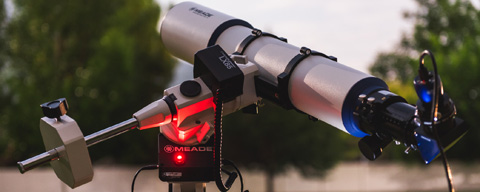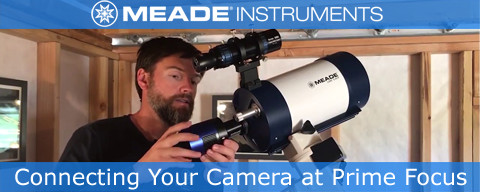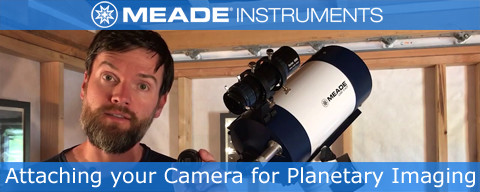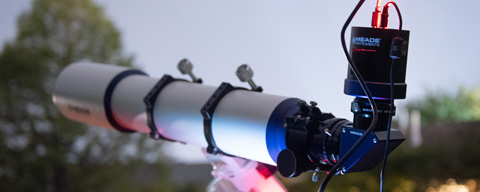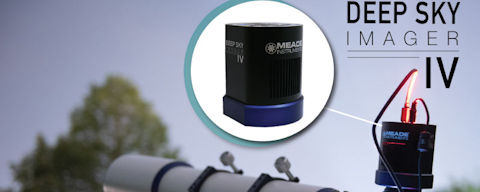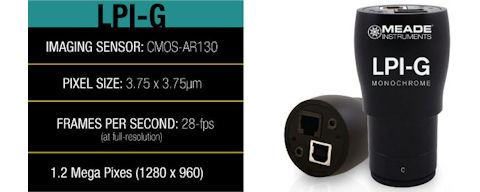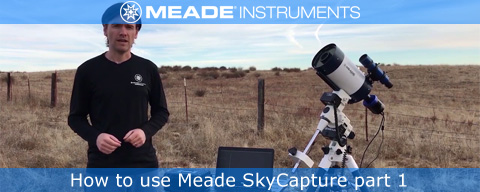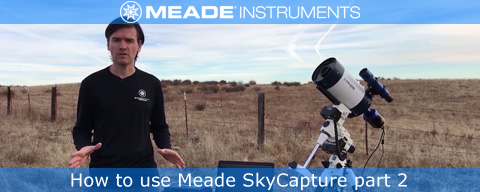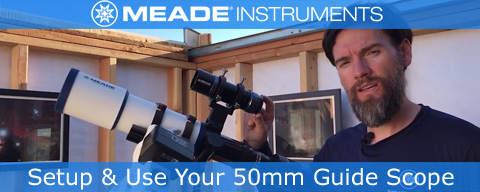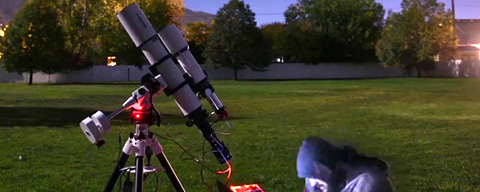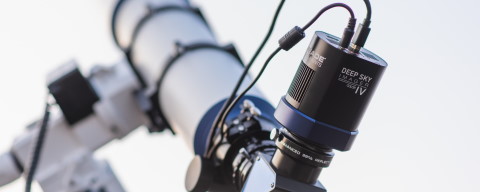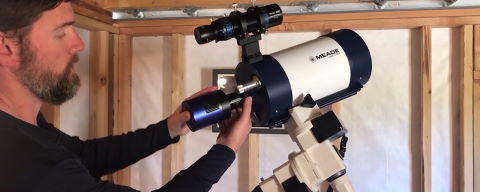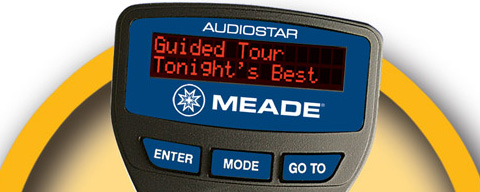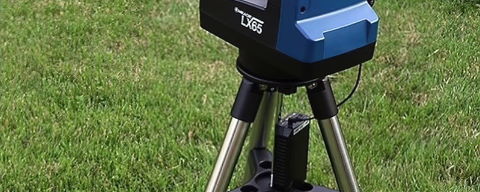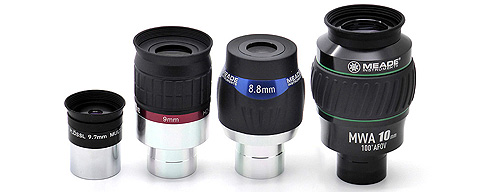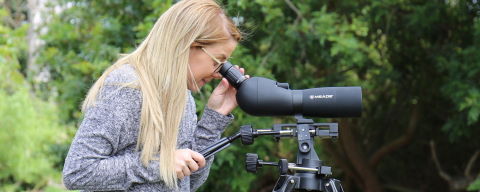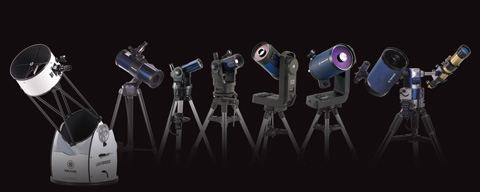- News
- How-To Guides
- Reviews
- Night Sky Watch
- Products
- Meade Telescopes
- Meade StarNavigator NG
- Meade ETX Observer
- Meade LightSwitch LS
- Meade LX65
- Meade LX85
- LX85 6-inch Maksutov-Cassegrain OTA only
- LX85 6-inch ACF OTA only
- LX85 6-inch Maksutov-Cassegrain
- LX85 6-inch ACF
- LX85 8-inch ACF OTA only
- LX85 5-inch Achromatic Refractor OTA only
- LX85 6-inch Reflector OTA only
- LX85 8-inch Reflector OTA only
- LX85 5-inch Achromatic Refractor
- LX85 6-inch Reflector
- LX85 8-inch Reflector
- LX85 8-inch ACF
- LX85 70mm APO Quad Astrograph
- LX85 80mm APO Triplet
- LX85 115mm APO Triplet
- LX85 Mount & Tripod
- Meade LX90 ACF
- Meade LX200 ACF
- Meade LX600
- Meade LX850
- Meade LightBridge
- Meade Optical Tube Assemblies (OTA)
- Meade Mounts
- Meade Visual Accessories
- Eyepieces
- Barlow Lenses
- Star Diagonals
- Viewfinders
- Red Dot Viewfinder
- Red Dot Finder
- Red Dot Viewfinder - ETX
- #828 8x50 Viewfinder - Blue
- #829 8x50 Viewfinder - White
- Finderscope Bracket 50mm V-style
- ARC Finderscope Bracket 50mm (Tall) & Leg Base
- ARC Finderscope Bracket 50mm (Tall)
- ARC Finderscope Bracket 50mm & Leg Base
- ARC Finderscope Bracket 50mm
- ARC Finderscope Leg Base
- Meade Optical Filters
- Meade Guiding Accessories
- Meade Power Supply Units
- Universal AC Adapter 12V 5A
- LXPS 18 Portable Power Supply
- DC Power Cord #607
- Universal Power Adapter 12V 3A
- Universal Power Adapter 12V 6A
- UK Power Adapter 12V 2A (2.5mm pin)
- DC Power Lead with Cigarette Lighter Adapter
- Power Extension Lead 5m Straight
- Power Extension Lead 5m Angled
- Mains Adapter / Charger 15V 1A
- ETX80/ETX90 Power Adapter 9V 2A
- Meade General Accessories
- 2" Accessory Adapter for ACF/SCT
- LX85 Counterweight 4.5 kg
- LX850 Counterweight 11.8 kg
- Extra 900 Grams Weight
- LS/LT/LX65 Tripod
- Vibration Isolation Pads
- Vixen-style Dovetail
- Light Shroud for 10-inch LightBridge
- Light Shroud for 12-inch LightBridge
- Balance System (8")
- Balance System (10")
- Balance System (12")
- Balance System (14")
- Balance System (16")
- Extra 900 Grams Weight
- Standard Field Tripod
- Dovetail Mounting Kit
- Universal Mounting Kit
- Balance System (16")
- Vibration Isolation Pads (no original box)
- Viewfinder Bracket Screws
- 9v Battery Holder
- Flexible Dew Shield 14"/16"
- LX85 Counterweight Shaft
- LX85 Tripod
- Giant Field Tripod
- X-Wedge (10"-14" telescopes)
- 3.25"-2" SCT Reducing Adapter
- Firmware - LS LightSwitch
- 8-inch f/10 Losmandy Dovetail Rail Assembly
- 10-inch f/10 Losmandy Dovetail Rail Assembly
- 12-inch f/10 Losmandy Dovetail Rail Assembly
- 14-inch f/10 Losmandy Dovetail Rail Assembly
- 16-inch f/10 Losmandy Dovetail Rail Assembly
- Meade Wedges, Weights, Tripods & Supports
- Equatorial Wedges
- Tube Balance Weight Systems
- Counterweights
- Tripods
- Supports, Plates & Pads
- Vibration Isolation Pads
- 8-inch f/10 Losmandy Dovetail Rail Assembly
- 10-inch f/10 Losmandy Dovetail Rail Assembly
- 12-inch f/10 Losmandy Dovetail Rail Assembly
- 14-inch f/10 Losmandy Dovetail Rail Assembly
- 16-inch f/10 Losmandy Dovetail Rail Assembly
- Vixen-style Dovetail
- Dovetail Mounting Kit
- Universal Mounting Kit
- Meade Observation Aids & Maintenace
- Meade Adapters
- Spare Parts
- Compass Bubble Level
- LX GPS Module (8"-14")
- LX85 Fixings Kit
- LX85 RA Motor
- LX85 Dec Motor
- StarLock 80mm
- Wedge Star Knob
- StarNavigator NG Mount Head & AudioStar Handbox
- ETX80 Battery Cover
- ETX90 Battery Cover
- LX85 Dec Coiled Cable
- LX85 RA Control Board
- LX Battery Holder Set
- LX90 RA Cone (8"-12")
- LX90 Control Panel (8"-12")
- LX90 Dec Motor Driver Board (8"-12")
- LX90 Dec Motor Assembly (8"-12")
- LX90 RA Motor Driver Board (8"-12")
- LX90 RA Motor Assembly (8"-12")
- LX200 Control Panel (8"-14")
- LX200 / LX600 Level North Sensor (8"-14")
- LX200 / LX600 Sensor Control Board (8"-14")
- LX200 / LX600 RA Motor Driver Board (8"-14")
- LX200 / LX600 Dec Motor Driver Board (8"-14")
- LX200 / LX600 Dec Motor Assembly (8"-14")
- LX200 / LX600 RA Motor Assembly (8"-12")
- LX600 Control Panel (10"-14")
- LX600 RA Motor Assembly (14")
- LX850 RA Motor Driver Board
- LX850 Control Box Assembly
- LX850 Dec Motor Assembly
- LX850 RA Motor Assembly
- LX850 Control Panel
- PST ITF Filter
- PST ITF Drawtube Assembly
- PST ERF Objective Cell
- ETX80 & ETX90 Dec Gearbox (arm)
- ETX80 & ETX90 RA Gearbox (base)
- ETX80 & ETX90 Battery Holder Cable
- ETX Vertical Lock Knob
- ETX Vertical Lock Lever
- ETX Vertical Lock Knob - Metal Insert
- StarNavigator NG Mount Head
- LightBridge Brake Kit
- Meade Cameras
- Meade Imaging Accessories
- Variable Projection Tele-Extender
- Zero Image Shift Electronic Micro-Focuser
- Basic Camera Adapter
- F/6.3 Focal-Reducer / Field-Flattener
- Series 6000 Field Flattener / Focal Reducer 2"
- Series 6000 Field Flattener / Focal Reducer 3"
- LX85 Polar Scope
- Variable Projection Camera Adapter
- #62 T-Adapter (ACF/SCT)
- #64 T-Adapter (ETX90/105/125/SN NG Mak)
- #64ST T-Adapter (ETX60/70/80)
- Canon-style EOS T-Mount
- Nikon-style DSLR T-Mount
- Bahtinov Focusing Mask 8-inch
- Bahtinov Focusing Mask 10-inch
- Bahtinov Focusing Mask 12-inch
- Meade Telescope Control
- Willmann-Bell Books
- Solar Astronomy
- Sport Optics
- Meade Telescopes

